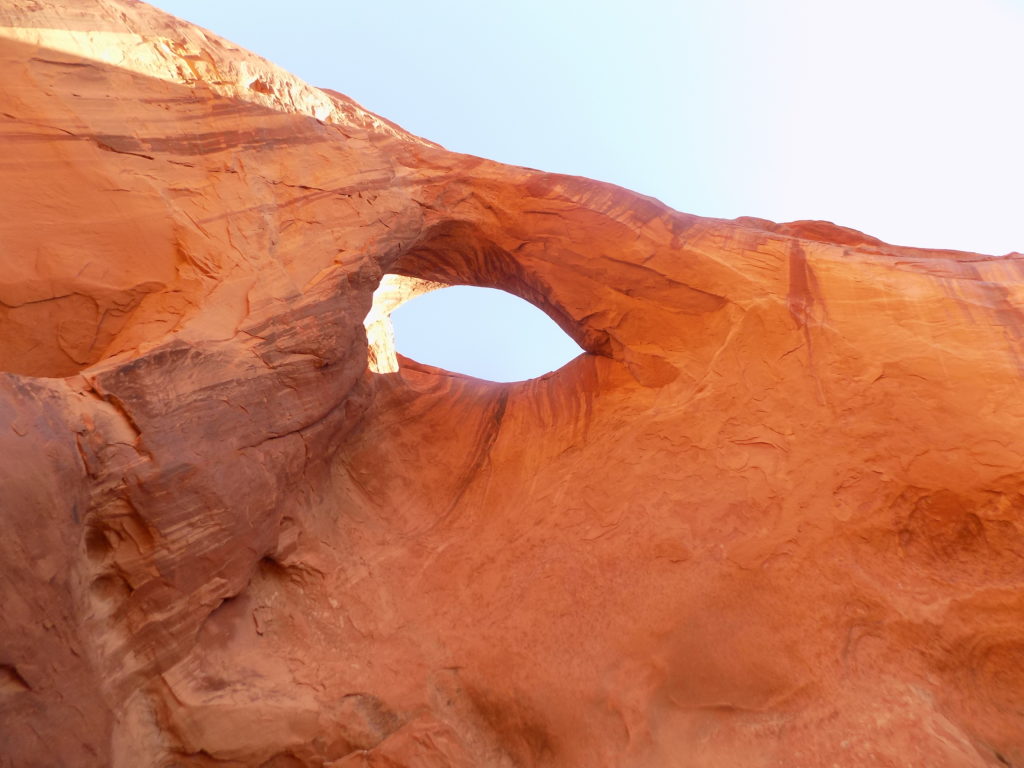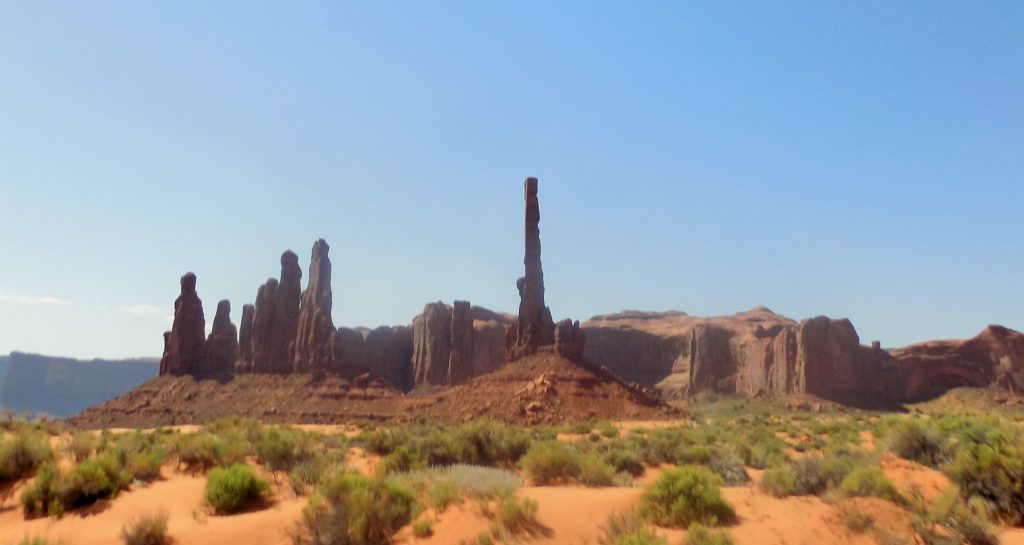European-Americans push west.
As Anglo-America continued expanding westward fulfilling its so-called manifest destiny, increasing clashes and skirmishes with the native population became inevitable. In a previous entry, I mentioned (and posted a video) of the notorious “Long Walk” that displaced the natives living in Canyon de Chelly. But Kit Carson and his troops didn’t limit their round-up of Navajos to what is now the Arizona – New Mexico border area. Rather, they imposed a brand of collective punishment that sought to relocate every Navajo – man, woman, and child – to a “reservation” which was, in reality, an internment camp at Bosque Redondo.
Setting aside the disregard for the dignity and lives of the native peoples, one folly of the U S government’s plan was that the camp at Bosque Redondo already housed nearly 400 Apaches who were long time enemies of the Navajos and Hopis. Predictably, clashes between the two groups were common, and inevitably, circumstances led to events that effectively turned the camp at Bosque Redondo into a failed experiment.
The two sides concluded the Treaty of Bosque Redondo on 1 June 1868. Among other terms, the treaty granted the tribe an area of about 5,400 square miles within the bounds of the Navajos’ four sacred mountains.
This map, taken from the website pollencircles.org shows the extent of today’s Navajo Nation. The four sacred mountains, Dibé Nitsaa, Tsisnaasjini’, Tsoodzil and Doko’oosliid frame the nation.
Dibé Nitsaa is the Sacred Mountain of the North. It’s called the Obsidian Mountain and is shown in black on the above map. In English, this is Mount Hesperus in Colorado’s La Plata Mountains. Tsisnaasjini’ is the Sacred Mountain of the East. It’s the Dawn of White Shell Mountain and called Mount Blanca in the San Luis Valley in Colorado. Tsoodzil is the Sacred Mountain of the South and is the blue mountain above. The Navajo translates as Blue Bead or Turquoise Mountain. New Mexicans call it Mount Taylor and it’s just north of Laguna. Finally, the Sacred Mountain of the West is Doko’oosliid or Abalone Shell Mountain. It’s in the San Francisco Peaks near Flagstaff.
The Navajos believe that their Creators placed them on the land between the four mountains representing the four cardinal directions. The Dinè believe:
“The land they gave us and told us to protect lies between the four Sacred Mountains. And all of this land is ours today. The Holy Ones told us that as long as we lived within the four Sacred Mountains they would take care of us.”
Two weeks after signing the treaty, the Navajos began their long walk home.
But sometimes, beauty has a price.
The original land granted in the 1868 treaty was about one-fifth the size of the Navajo Nation today and it did not include Monument Valley. Piece by piece over the ensuing decades, the Navajos were able to gradually and patiently negotiate the expansion of the original land grant. Even then, Monument Valley was, to some degree, excluded.
While there were periods in the early 20th century when the control of the land was ceded to the Navajos, Anglos reclaimed control every time they believed the land might hold gold, oil, or some other exploitable commodity. They finally gave control back to the Navajo only after they deemed it useless for mining. The entire valley was finally returned to the Navajo in an agreement signed in 1933 in Blanding, Utah.
Total Navajo control lasted all of a decade or so until sometime in the mid 1940’s someone discovered deposits of uranium in Monument Valley. By 1946, with the cold war looming, The U S government returned to the valley intent on securing a form of uranium independence. Between 1948 and 1966 U S contracted firms extracted nearly four million tons of uranium. By the 1990’s when the cold war had, for all intents and purposes, appeared to have come to an end, the mining companies closed up shop and walked away leaving a toxic mess behind that haunts the Navajos to this day.
If you look at a map, you’ll see that the area is called Oljato-Monument Valley and has designated census areas in both Arizona and Utah. There are six abandoned uranium mines in and around Oljato. A 2014 EPA study that scanned nearly 500 miles across this and other areas in Navajo Nation found background radiation levels 10 to 25 times higher than normal background radiation.
How has that changed life, or more accurately, death for the Navajos? In 1956, the Arizona Medical Journal published an article titled “Cancer immunity in the Navajo” because death from cancer was so rare among their population. By 2004, the Navajo Division of Health reported cancer deaths from colorectal, stomach, kidney and renal pelvis, pancreatic, and liver and intrahepatic bile duct cancers, respectively as the primary cause of death among the Navajo.
Ending the visit on a happy note.
If it’s true that for every good thing there exists the potential for a counterbalancing bad thing, then it must also be true that for every bad thing, there exists the potential for a counterbalancing good thing. To wit, I give you the Eye of the Sun.
This is one of the formations you can only see with a guide. If you choose to drive the public loop, you aren’t permitted on the road that leads to this section of Monument Valley. There are several other imagination inspiring formations that you’d miss such as the Ear of the Wind, the Sleeping Dragon and the Totem Pole (an exemplary display of what erosion does to a butte) and its accompanying Yei Bi Chei – Navajo spiritual gods here seen as a group of dancers emerging from a hogan.
When we were beneath the Sun’s Eye, Albert asked the three of us to lie down. He had us relax and close our eyes and I sensed that, as we did, somehow our breathing had synchronized. After a few moments, he began to sing. He didn’t translate the words of his song but my Dutch companions and I spoke quietly of it afterward and, while we all had a slightly different emotional experience, we agreed we would carry it with us for a long, long time.


